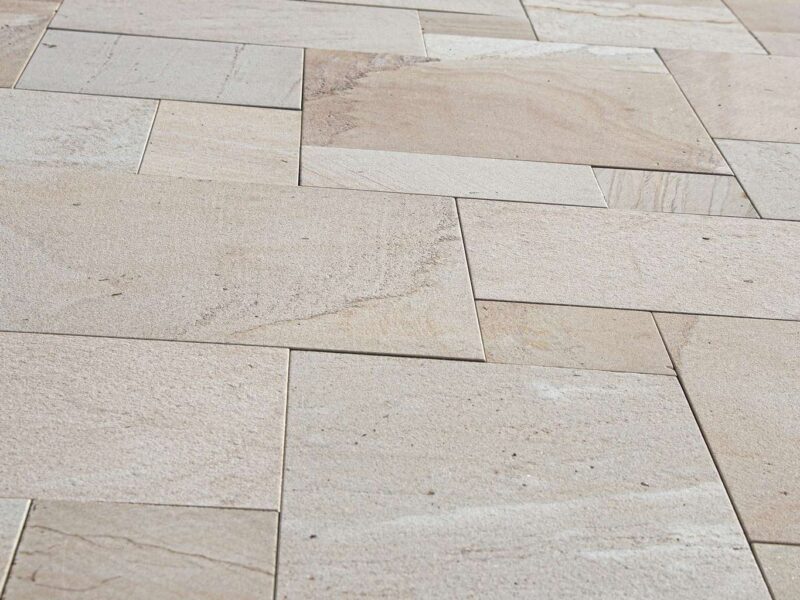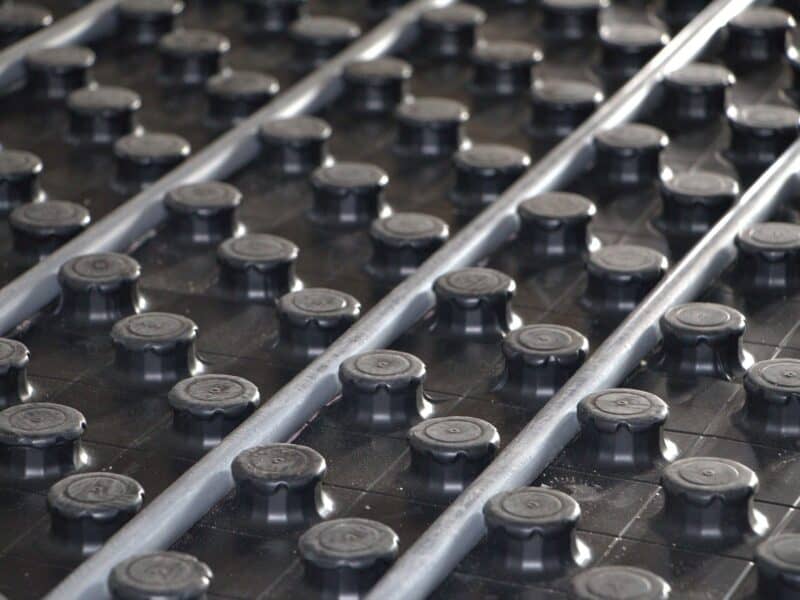
Like hardwood floors, natural stone floors have a timeless beauty and an inherent feel of quality that is hard to match with any other type of flooring material.
It is also one of the hardest and most durable types of flooring if correctly looked after, although it is by no means the easiest to maintain or the cheapest to install!
You may have your heart set on Stone Floors but the selection process should still be the same as if you were considering flooring materials from scratch. So you need to ask yourself the same practical questions…
Is the Floor Going to be Outdoor or Indoor?
If outdoors, then it will need to be resistant to harsh weather conditions, particularly in the UK and to be impervious to moisture and frost. Otherwise, it will absorb too much water which will damage the stone when it freezes.
Slate is a type of natural stone that would be good for Outdoor Conditions.
Will the Flooring Need to be Safe?
Obviously, all flooring needs to be safe but some may be under conditions where accidents are more likely, for example, flooring in bathrooms. To give you more traction and therefore prevent slips and falls, choose a stone which has a rougher, less-polished surface.
Some stone floors are actually designed with specific non-slip properties, such as dimpled surfaces or an additional textured substance (such as silicon carbide) glazed on top to provide a non-skid surface.
What Will the Flooring Have to Cope With?
Probably the most important question, you need to know if your floors will have to cope with very high wear and tear.
If the flooring is going to be subject to heavy traffic regularly, it is best to choose a stone tile with a tougher glaze which means it was fired at higher temperatures for longer, which gives greater durability. In addition, it may be worth considering a darker colour floor grout if the flooring will be exposed to a lot of dirt and grime from the outdoors (e.g. through outdoor shoes).
How Big do I Want my Tiles to be?
Remember, bigger tiles might be nicer to look at but they also need a flatter floor. If your subfloor is sloping or has natural undulations (e.g. in the garden), then it may be better to install smaller tiles which can adapt to different contours more easily.
How Much do I Want to Spend?
Another important question: cost and budgets often end up deciding things irrespective of other factors. In any case, natural stone is already a luxury choice and will cost more than plain ceramic or porcelain tiles but even within natural stones, you will be paying much more for the ‘exotic’ stones like marble.
This is partly because of the difficulty of obtaining such stones, for example, some types of marble limestone can only be derived from a specific quarry and so the price reflects this limited supply.
The quality and availability of the stone is also reflected in the price, so the same type of stone may cost differently in different situations.
Slate, for example, can come in a cheap version which has an uneven surface and thus is not suitable for indoor use with bare feet (e.g. bathrooms) but it can also come in a top quality version suitable for use anywhere in the home.
Another reason for high cost is the Ongoing Maintenance involved. For example, Marble needs constant cleaning, conditioning and maintenance to ensure its beauty and durability. It will stain easily from spills as it is porous, and it is particularly sensitive to citric juices and vinegar and other acids.
Even pollutants in the atmosphere can damage or discolour its surface.
Types of Natural Stone Flooring
Natural stone can first be divided into three main categories:
- Igneous: ancient stone that was created from cooled magma (molten rock) in the earth’s crusts, which crystallized to give granular rocks. Examples are granite and basalt.
- Sedimentary: these rocks were created by layers of deposit in ancient lakes, seas and rivers over the course of many years. They can also be created by precipitation out of the water. While they are softer than igneous rock, they are still extremely tough and durable for use as flooring. Limestone is an example of sedimentary stone.
- Metamorphic: the most ‘modern’ of the natural stones, these were formed when rock ‘metamorphosed’ from one type to another, due the intense heat and pressure from geothermal activity. Marble is an example of metamorphic rock, transformed from limestone under intense heat and pressure and therefore harder, making it easier to achieve a high polish.
Whichever type of stone you choose, remember that it must be a compromise between the look you want to achieve and the practical demands of your lifestyle.


